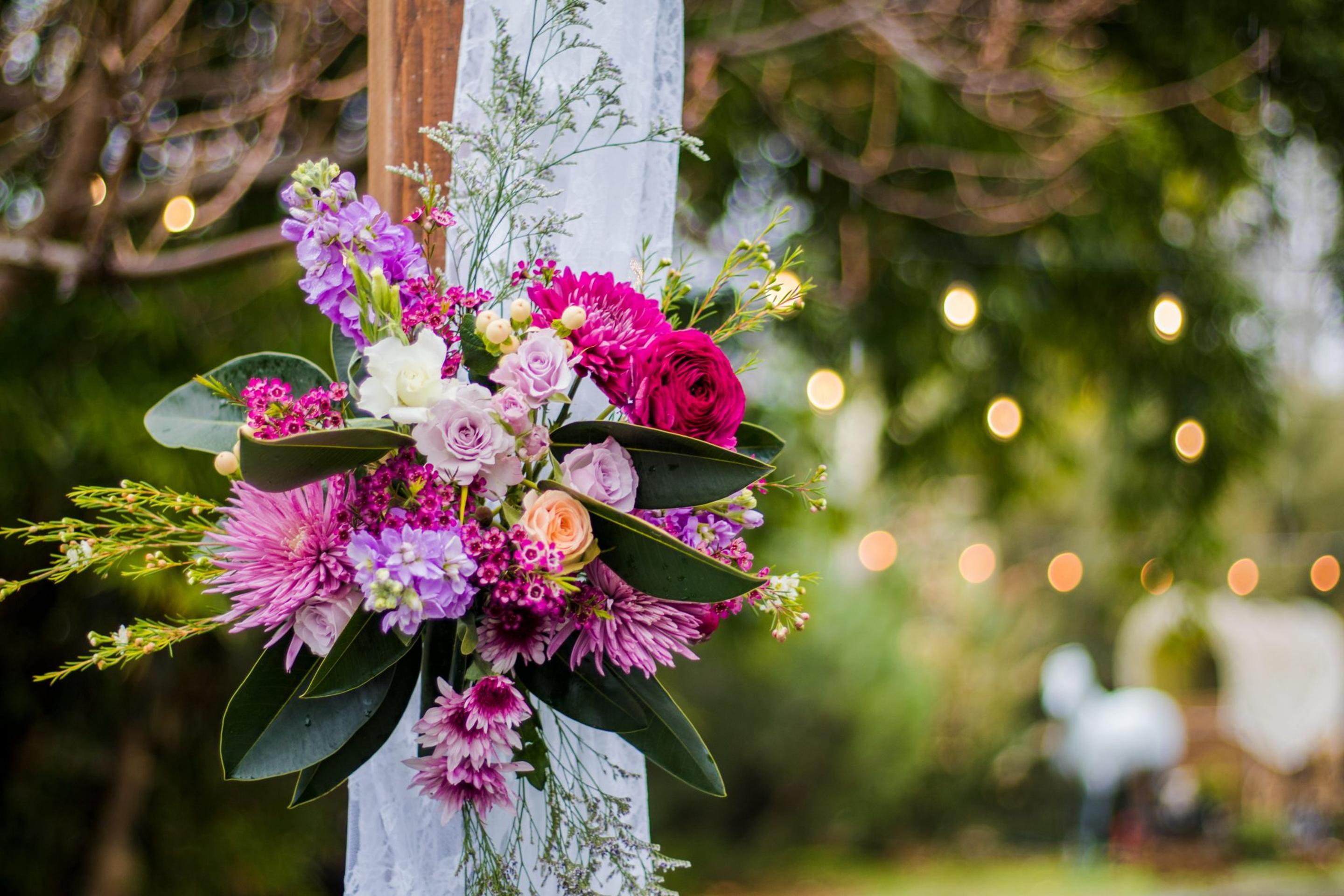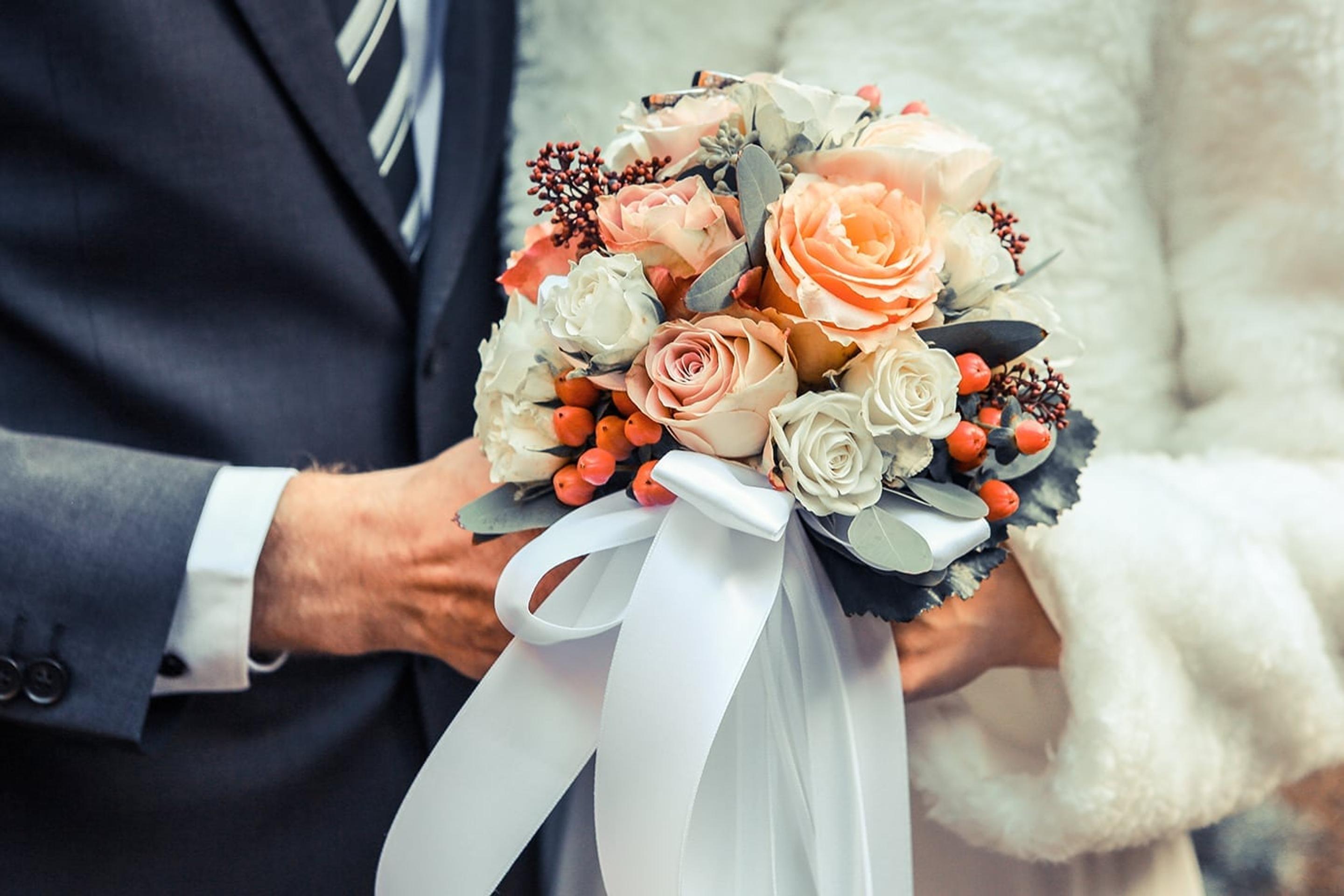
Popular wedding colors can be easily broken down by seasonality. Choosing wedding flowers that are in season can help with your budget and make the season itself play a part in your wedding theme ideas.
When choosing your perfect wedding color palette, however, the above is just one of many considerations. Only one thing really needs to be kept top of mind at all times…
There are no rules, only guidelines. This is your day.
With so much advice and information available, it’s easy to feel overwhelmed.
Still, it’s even easier to make the whole thing fun!
Then just sit back, relax, and see it all in your mind. Think about the colors and color combinations that inspire or comfort you in everyday life. Look around. Do a little research. You may see colors and color combinations you love used in ways you hadn’t given any thought to before.
Colors create moods.
Colors create the ambiance that fills up a room. They complement, contrast, or clash with each other. Even different shades of a single color can evoke completely different ideas or feelings, and work in different ways in different designs. And they will certainly represent who you are and what your marriage means to you in a very real, very powerful way, on your big day.
So use your own feelings as your primary guideline for wedding colors, wedding flowers, and wedding themes.
Venues, Hues, and You

Aesthetics, hues, and your two top flower colors. Your two colors will act as the foundation for everything that flows and follows into your wedding flowers look and your overall theme. And that’s all fantastic, but it begs a harsh question.
Will your vision and your wedding venue match?
Are you hoping to find a venue that will match your vision? Or find a wonderful wedding venue and use it as the starting point for your wedding colors palette and theme? Or possibly find a great venue and play with hues and contrasts — to highlight or downplay certain elements — and make a creative compromise that works?
The critical element in all of this, of course, is simply to be aware of these things from the get-go. Discuss it with your florist, who will have had experience with these issues before and be able to help you, based on your feelings and priorities.
For example, you could find a wedding venue that you love for a combination of aesthetic and logistical reasons. But it doesn’t fit your ideal color palette.
So what to do?
A creative compromise could be made based around whatever elements are dominating the space. This compromise may not fit your ideal vision, but it could spark a new one, using those elements as your starting point.
And this could make the reality of your big day stunning, memorable, and successful.
Let’s say there are only a couple of disliked elements in the venue. Your florist would probably avoid using contrasting colors around those elements, as that would only serve to highlight the elements by drawing attention to them.
Complementary tones, on the other hand, can have the opposite effect, cleverly designed to enhance the wider space, while essentially making the offending elements invisible.
See the Words of Wedding Wisdom section of our Wedding Flowers post for more on the expertise of florists and why it can really help to heed their advice.
Some venues, on the other hand, are creative blank slates.
Wedding venues such as tents, lofts and converted warehouses, for example, are wide open to your color palette and the ambiance you wish to create. This provides more freedom; but building from the ground up, so to speak, can also be the more expensive option, depending on how you approach it.
See the Beauty, Budgets, and Balance section of our Wedding Flowers post for more on this.
Understanding that your theme, your venue, and your colors are interlinked is key.
Friends and Lovers

"All colors are friends of their neighbors and lovers of their opposites."
So here is where the wonderfully helpful color wheel comes into play.
The colors sitting next to each other, or near each other, on the wheel, will always combine well because they all contain elements of their neighboring primary colors. Creating a mood based on this simple formula is easy and can be very effective.
Light and dark versions of one color can also be used to create harmony and/or convey a mood, with soothing or intense effects as the desired result. Compare, for example, the gentle effect of combining pale pink blooms, with the more vibrant hot pink tones of the same combination.
Then we have the law of opposites attracting.
The opposing colors on the color wheel can be used to enhance each other. Pairing red with green, for example, will make the red appear brighter. It’s usually a case of which color is your lead color and what is playing a supporting role.
Here’s an example of how to create a natural balance:
Try using three complementary shades:
- Neutral
- Main accent
- Accessory accent
And add one metallic color.
There are many, many variations for different effects. And they can all be picked out and put together to support your wedding theme ideas and create your mood.
Again — this is an area your florist will be happy to help with.
Your True Colors

As said at the start of this blog, picking your perfect wedding colors palette is all about you.
Your first priority could actually be based in a childhood dream of carrying a red rose wedding bouquet down the aisle, or blue wedding flowers, or perhaps white wedding flowers.
Which means it’s also about your soulmate and what you feel represents you as a couple.
Do you feel that your relationship is based on the law of opposites attracting?
Just take a look at the section above to get an idea of how your wedding flowers, bridal bouquet, or wedding theme ideas as a whole could reflect that feeling.
If you feel your relationship is based on a meeting of hearts and minds, the above section also shows how similarities could be represented through your wedding flowers.
And what a great talking point these options make!
To take a deeper dive into this idea, you should also consider what meanings are usually ascribed to flower colors. Here are a few to consider:
- Yellow — Love of life, sunshine, and summer joy. Yellow has always been one of the big winners for obvious reasons. Still, let’s not forget that lighter shades of yellow bring with them cozier feelings of warmth, springtime, and hope.
- Green — From light, bright emerald green, to bottle green, or light spring green, the effect is always soothing and symbolic of peaceful beauty, growth, and balance. Greenery itself can work superbly with many combinations.
- Red — Power, passion, and nature’s color to warn of danger — red doesn’t ooze confidence, it declares it! If passionate romance rules the day and your future plans, a red wedding bouquet, or a red theme, would send out much more than subliminal signals! Many Asian countries also consider it a symbol of good luck.
- Pink — Love, devotion, elegance, softness, femininity. There is a long list for this color, with pale pink symbolizing new love and affection, and dark pink symbolizing excitement and passion. It’s also one of the most popular wedding colors, of course.
- White — Symbolizes purity of spirit and innocence. It also represents truth and wholeness, and conveniently pairs well with everything, probably because it’s naturally easy to get along with!
- Orange — Energy, fun, and honesty. Adventure and romance. Destination weddings in warm climates make orange a must have. Or just warmer times of the year. Orange is youthful, cheerful and brimming with optimism for today and for your future.
- Blue — Serenity, peace, and deep tranquility. Lighter shades evoke a dreamy feel, great for spring weddings, while a royal blue or navy represents tradition and loyalty, working superbly for winter or night-time weddings.
- Purple — Enchantment, creativity, luxury, and imagination. Think fairy tales. Royal purple represents nobility and royalty, while pale purples are considered feminine, often used as an alternative to pale pink. Different shades look particularly great together, too.
So it’s all about where you start.
Think of the colors you love and in what way you want them to represent your marriage through your wedding colors. It could all start with your wedding dress, your bridal bouquet, your wedding venue, your wedding theme ideas — where it begins doesn’t matter.
How it all comes together does!
Consider your wedding colors in terms of how they combine with wedding themes or style. Then think about your location and how that complements, contrasts, or clashes with you vision.
Consider the season.
As always, talking these things through with a professional florist is the best advice you could take. And when you have a big bunch of ideas to throw up into the air, having a florist on hand means they will be much more likely to fall together flawlessly on your big day.
So what are your true colors?


